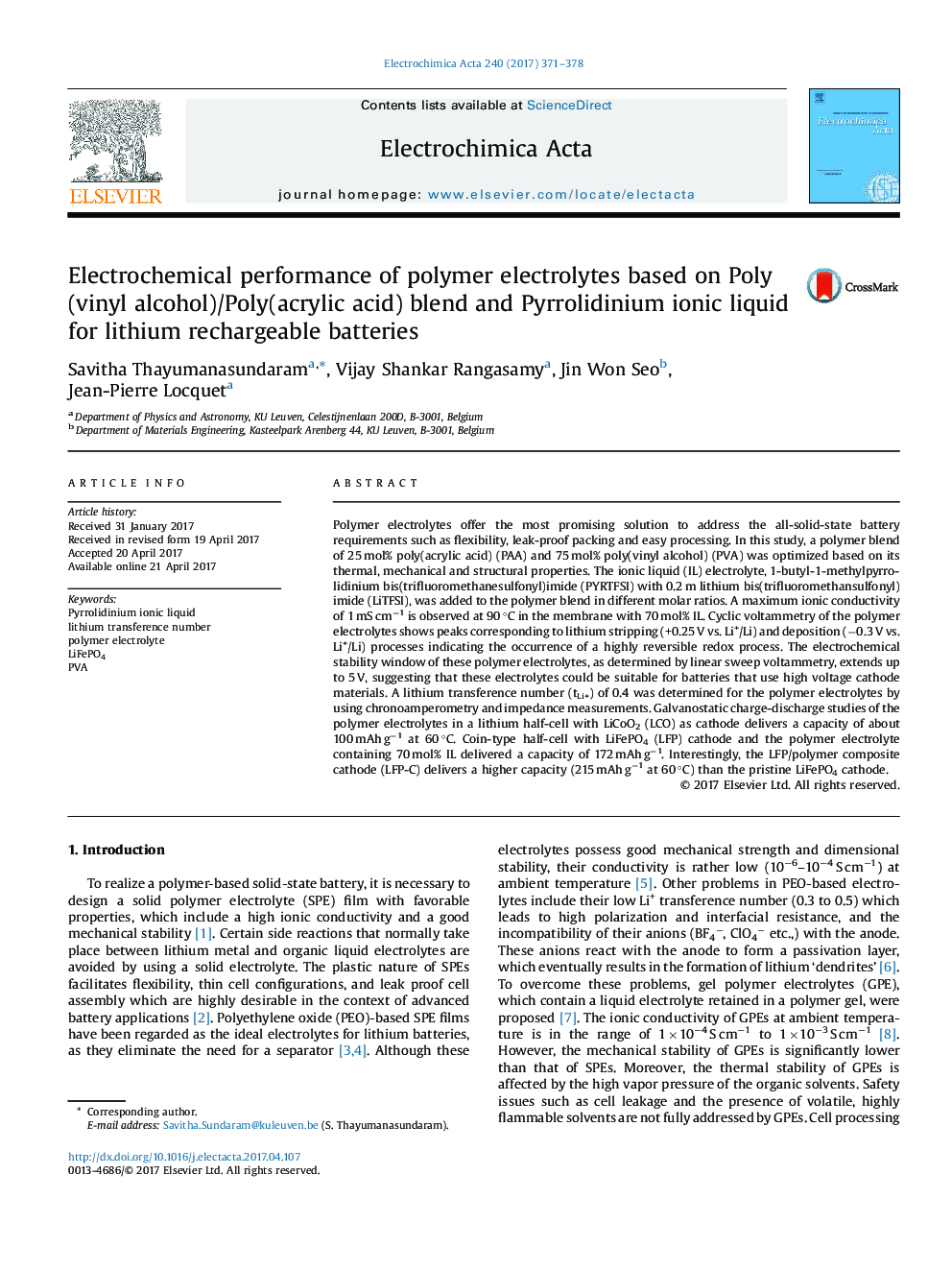| Article ID | Journal | Published Year | Pages | File Type |
|---|---|---|---|---|
| 6471313 | Electrochimica Acta | 2017 | 8 Pages |
Polymer electrolytes offer the most promising solution to address the all-solid-state battery requirements such as flexibility, leak-proof packing and easy processing. In this study, a polymer blend of 25 mol% poly(acrylic acid) (PAA) and 75 mol% poly(vinyl alcohol) (PVA) was optimized based on its thermal, mechanical and structural properties. The ionic liquid (IL) electrolyte, 1-butyl-1-methylpyrrolidinium bis(trifluoromethanesulfonyl)imide (PYRTFSI) with 0.2 m lithium bis(trifluoromethansulfonyl)imide (LiTFSI), was added to the polymer blend in different molar ratios. A maximum ionic conductivity of 1 mS cmâ1 is observed at 90 °C in the membrane with 70 mol% IL. Cyclic voltammetry of the polymer electrolytes shows peaks corresponding to lithium stripping (+0.25 V vs. Li+/Li) and deposition (â0.3 V vs. Li+/Li) processes indicating the occurrence of a highly reversible redox process. The electrochemical stability window of these polymer electrolytes, as determined by linear sweep voltammetry, extends up to 5 V, suggesting that these electrolytes could be suitable for batteries that use high voltage cathode materials. A lithium transference number (tLi+) of 0.4 was determined for the polymer electrolytes by using chronoamperometry and impedance measurements. Galvanostatic charge-discharge studies of the polymer electrolytes in a lithium half-cell with LiCoO2 (LCO) as cathode delivers a capacity of about 100 mAh gâ1 at 60 °C. Coin-type half-cell with LiFePO4 (LFP) cathode and the polymer electrolyte containing 70 mol% IL delivered a capacity of 172 mAh gâ1. Interestingly, the LFP/polymer composite cathode (LFP-C) delivers a higher capacity (215 mAh gâ1 at 60 °C) than the pristine LiFePO4 cathode.
